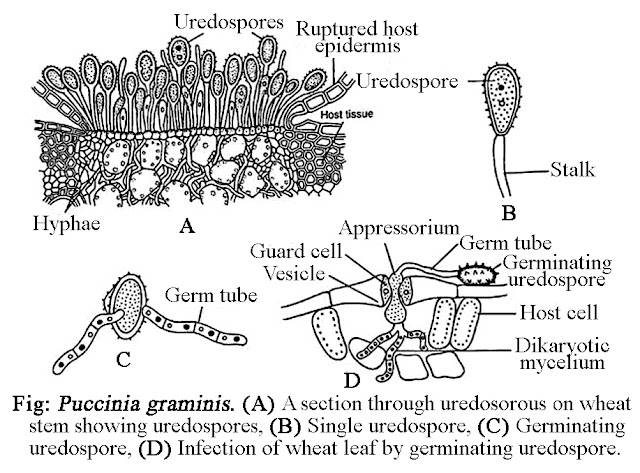RANUNCULACEAE
1. SYSTEMATIC
POSITION:
Bentham
& Hooker
Division: Phanerogames (Seed Plants)
Class:
Dicotyledones
Sub-class: Polypetalae
Series:
Thalamiflorae
Order:
Ranales
Family:
Ranunculaceae
2. MORPHOLOGICAL
CHARACTERS:
Habit
– Plants are predominantly herbs or a few are shrubs, annual or perennials,
a few are aquatic. Perennation takes place by means of rhizomes or by tuberous
roots.
Stem
– Mostly herbaceous, in perennial species rhizome present.
Leaves
– Generally alternate or radical, simple or compound, entire but usually
much divided in a palmate manner.
Inflorescence
– Solitary terminal or axillary and cymose, rarely racemose.
Flower
– Bisexual, pentamerous, mostly actinomorphic, acyclic or hemicyclic,
hypogynous.
Calyx
– Five, free, caducous or wanting, very often petaloid, imbricate or rarely
valvate.
Corolla
– Five or more, imbricate, caducous or wanting, nectarines of various forms
usually present at the base, in a few there is no distinction between calyx and
corolla.
Androecium
– Stamens indefinite, free, anthers adnate, dehiscence by longitudinal
slits, extrose.
Gynoecium
– Carpels many, free, rarely united, ovary unilocular, superior, ovules one
to many, placentation marginal.
Fruit
– Aggregate, usually an etaerio of achenes or follicles or simple follicle
or capsular and rarely berry.
Seed
– Endosperm oily, embryo small, cotyledon epigeal or hypogeal.
3. FLORAL
FORMULA:
4. COMPARATIVE SYSTEMATIC POSITION AND
AFFINITIES:
The Ranunculaceae
is generally considered as one of the most primitive family of dicotyledones.
Bentham & Hooker as well as Hutchinson has placed the family Ranunculaceae
in the order Ranales of very early dicotyledones. Engler & Prantl, Rendle
and others put the family under the advanced Archichlamydeae. Takhtajan has
placed it in the order Ranunculales.
The
floral parts of Ranunculaceae are similar in structure and arrangement to those
of Magnoliaceae. On the basis of the structure of stamens and carpels, the
Ranunculaceae shows resemblance to the Papaveraceae. The Ranunculaceae and
Berberidaceae are also phytochemically related in the possession of the alkaloid
‘berberin’. The family can be linked with Rosaceae on account of the presence
of free and numerous stamens and carpels. This family shows a combination of
primitive and advanced character. The Ranunculaceae are considered primitive in
the presence of predominantly herbaceous habit, bisexual and actinomorphic
flower, numerous free and spirally arranged stamens and carpels, follicular
fruits, and anatropous ovules. They are advanced in having unisexuality, few
and whorled appendages, zygomorphy, connation in the gynoecium and achenial
fruits.
1. Aconiyum
napuellus, Delphinium ajacis, Ranunculus, Anemone, etc. are commonly cultivated as ornamental plants.
2. The roots of Aconitum heterophyllum yields an alkaloid ‘aconitina’ used in
relieving pain and also for palpitation of heart. The roots of Thalictrum foliosum yield drugs specific
for opthalmia and other eye troubles. ‘Pulsatilla’
obtained from Anemone pulsatilla is a
good tonic for nerve and menstrual disorder.
3. Seeds of Nigella sativa are used as spices and condiments.
4. Some plants are ornamental for
their showy beautiful flowers e.g., Delphinium
ajacis, Ranunculus spp., Paeonia, Aquilegia, Clematis, etc.
*************




The information was really good and helpful.
ReplyDelete